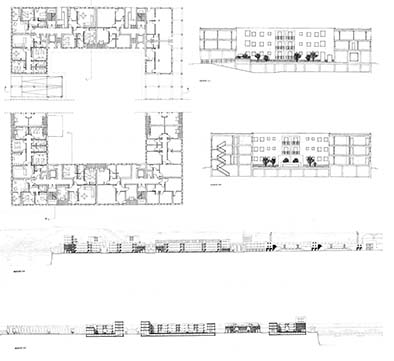About draw to build
DOI:
https://doi.org/10.6092/2281-4574/7382Abstract
To draw architecture and the city imply the desire to deepen knowledge about the morphological and typological issues of places. In the same way, knowing how to understand the rules that underlie the knowledge of descriptive geometry helps to reveal the same rules and refer them to the space to which they connect. The realization of these concepts has characterized the educational path of some of the "historic" universities such as the University of Architecture in Venice, the University of Architecture in Naples as well as the Milan Polytechnic and the Sapienza University of Rome Valle Giulia. These locations have distinguished themselves from others and, in particular, have provided since their institutional foundation, a significant example of common sharing on teaching, giving life to a disciplinary transmission based on maieutics attributable to the specific and delicate historical period located in the time between the Sixties, up to the first half of the Eighties of the Twentieth Century. This modus operandi had characterized a climate in which the thought shared between the teachers of the different subjects was based on the recognizability of the disciplinary tradition and applied to the same teachings, thus forming entire generations of architectural students. The turning point determined by the emergence of new and different instruments as well as increasingly sophisticated and complex technicalities more from an operational than a conceptual point of view, has inevitably changed the range of values, behaviors, aspects and even results of the discipline. In this way, we moved to educational forms based more on the need for outcomes than on the issues of processes providing, despite good faith, a sort of didactic standardization based more on mere bureaucratese and consequently notionism, leaving out the tradition linked to the active participation of descends.
Downloads

Downloads
Published
Issue
Section
License
Gli autori che pubblicano su questa rivista accettano le seguenti condizioni:- Gli autori mantengono i diritti sulla loro opera e cedono alla rivista il diritto di prima pubblicazione dell'opera, contemporaneamente licenziata sotto una Licenza Creative Commons - Attribuzione che permette ad altri di condividere l'opera indicando la paternità intellettuale e la prima pubblicazione su questa rivista.
- Gli autori possono aderire ad altri accordi di licenza non esclusiva per la distribuzione della versione dell'opera pubblicata (es. depositarla in un archivio istituzionale o pubblicarla in una monografia), a patto di indicare che la prima pubblicazione è avvenuta su questa rivista.
- Gli autori possono diffondere la loro opera online (es. in repository istituzionali o nel loro sito web) prima e durante il processo di submission, poiché può portare a scambi produttivi e aumentare le citazioni dell'opera pubblicata (Vedi The Effect of Open Access).

